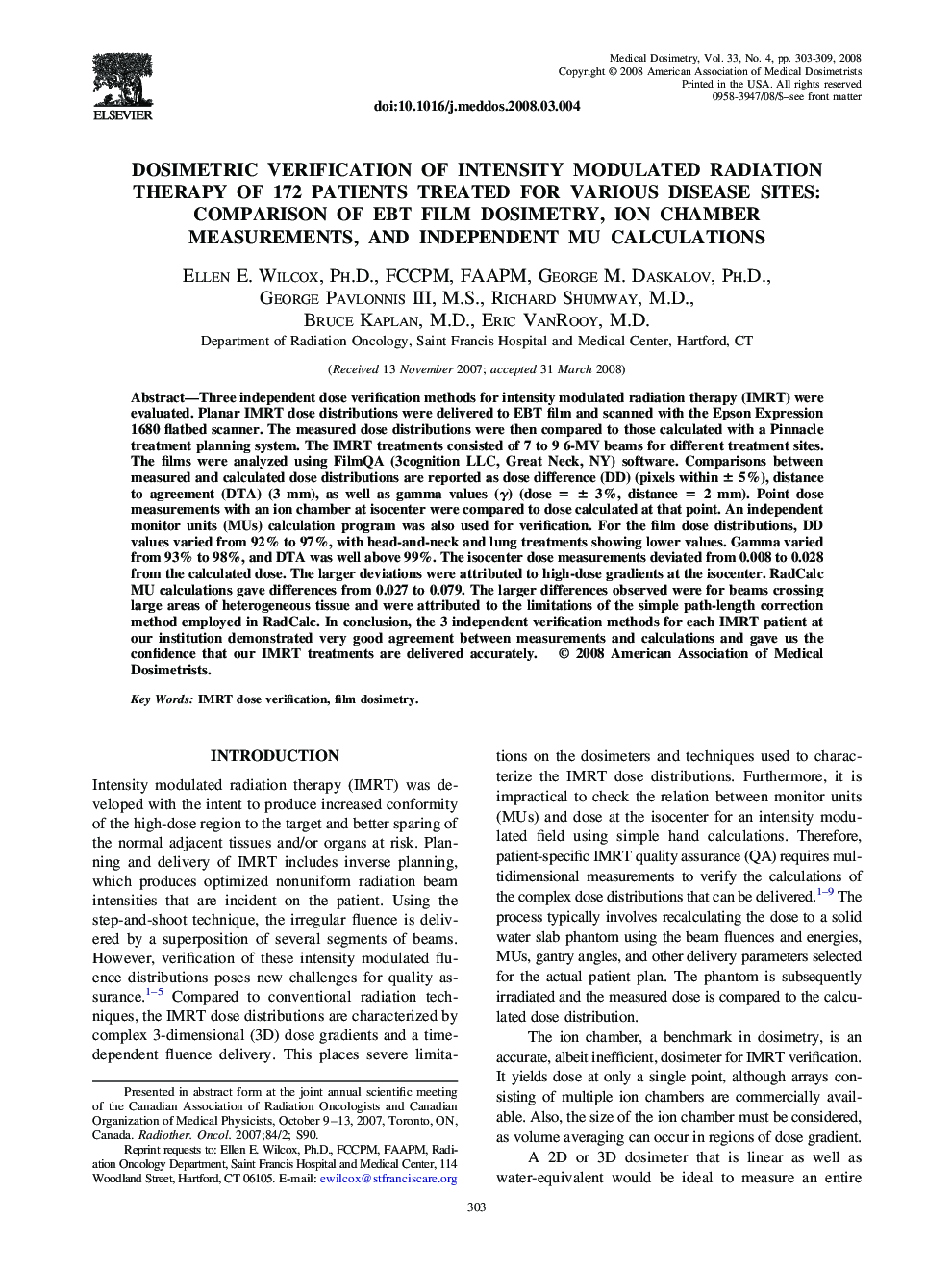| Article ID | Journal | Published Year | Pages | File Type |
|---|---|---|---|---|
| 1885473 | Medical Dosimetry | 2008 | 7 Pages |
Abstract
Three independent dose verification methods for intensity modulated radiation therapy (IMRT) were evaluated. Planar IMRT dose distributions were delivered to EBT film and scanned with the Epson Expression 1680 flatbed scanner. The measured dose distributions were then compared to those calculated with a Pinnacle treatment planning system. The IMRT treatments consisted of 7 to 9 6-MV beams for different treatment sites. The films were analyzed using FilmQA (3cognition LLC, Great Neck, NY) software. Comparisons between measured and calculated dose distributions are reported as dose difference (DD) (pixels within ± 5%), distance to agreement (DTA) (3 mm), as well as gamma values (γ) (dose = ± 3%, distance = 2 mm). Point dose measurements with an ion chamber at isocenter were compared to dose calculated at that point. An independent monitor units (MUs) calculation program was also used for verification. For the film dose distributions, DD values varied from 92% to 97%, with head-and-neck and lung treatments showing lower values. Gamma varied from 93% to 98%, and DTA was well above 99%. The isocenter dose measurements deviated from 0.008 to 0.028 from the calculated dose. The larger deviations were attributed to high-dose gradients at the isocenter. RadCalc MU calculations gave differences from 0.027 to 0.079. The larger differences observed were for beams crossing large areas of heterogeneous tissue and were attributed to the limitations of the simple path-length correction method employed in RadCalc. In conclusion, the 3 independent verification methods for each IMRT patient at our institution demonstrated very good agreement between measurements and calculations and gave us the confidence that our IMRT treatments are delivered accurately.
Keywords
Related Topics
Physical Sciences and Engineering
Physics and Astronomy
Radiation
Authors
Ellen E. Ph.D., FCCPM, FAAPM, George M. Ph.D., George M.S., Richard M.D., Bruce M.D., Eric M.D.,
